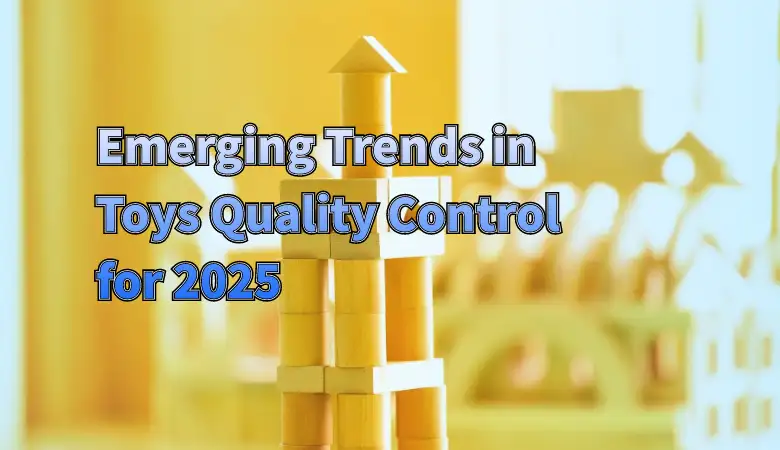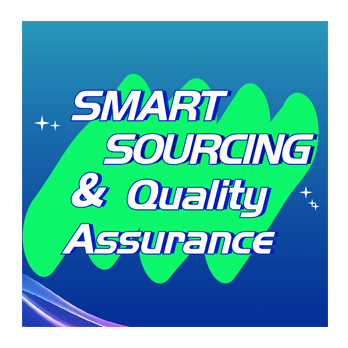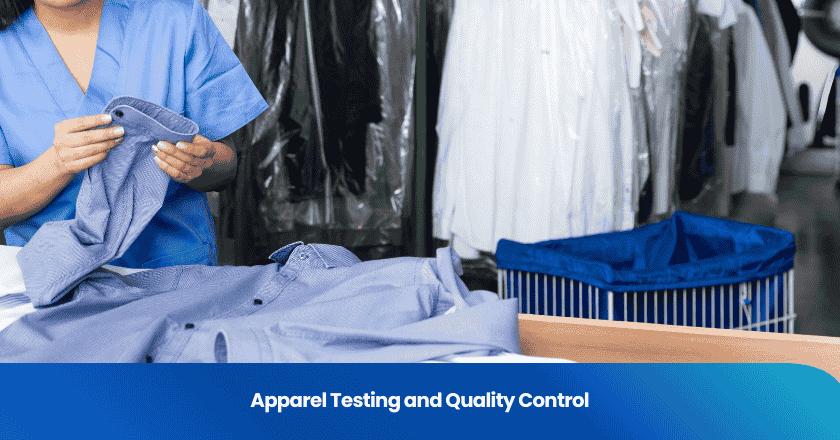
Toys quality control plays a critical role in protecting children from unsafe products. Every product must meet strict safety standards to prevent harm. Without proper safety measures, children face risks from defective products, leading to safety incidents. The toy manufacturing industry constantly evolves to address these challenges. Emerging trends in 2025 focus on improving safety and compliance. Innovation drives these changes, helping manufacturers create safer products while reducing recalls. By adopting advanced tools, the industry ensures children enjoy safe toys without compromising quality.
Current Challenges in Toys Quality Control
Complexity in Modern Toy Designs
Modern toys have become more intricate, featuring advanced mechanisms, electronic components, and interactive features. These designs enhance playtime but also introduce new safety concerns. You may notice that toys with small parts or complex assemblies pose a choking hazard or risk of malfunction. Manufacturers face challenges in ensuring every product meets safety standards without compromising creativity. Quality control must adapt to test these products thoroughly, identifying potential hazards before they reach consumers.
As toys become more sophisticated, the need for rigorous quality checks grows. Ensuring safety in such designs requires innovative testing methods.
Adapting to Stricter Global Safety Standards
Global safety standards for toys have become increasingly stringent. Countries now enforce detailed regulations to protect children from harm. You might find that these standards vary across regions, making compliance a challenge for manufacturers. For example, a product meeting European safety standards might require modifications to comply with U.S. regulations. This complexity demands a robust quality control system capable of addressing diverse requirements. Manufacturers must stay updated on evolving trends in safety standards to avoid penalties or recalls.
Addressing Consumer Demand for Sustainable Toys
Consumers today prioritize sustainability in their purchasing decisions. Parents often prefer toys made from eco-friendly materials or those with minimal environmental impact. However, creating sustainable products introduces unique challenges. For instance, biodegradable materials may not always meet durability or safety standards. You may wonder how manufacturers balance sustainability with safety concerns. The answer lies in innovation, as companies explore new materials and production methods to align with consumer preferences while maintaining product quality.
Shortcomings of Traditional Quality Control Approaches
Traditional quality control methods often fall short in addressing the complexities of modern toy manufacturing. These methods rely heavily on manual inspections and standardized testing, which may not always detect subtle defects or emerging safety risks.
Did you know? Manual inspections can miss up to 30% of defects in intricate toy designs, especially those with electronic components.
You might notice that traditional approaches struggle to keep up with the pace of innovation. As toys become more advanced, manual testing cannot efficiently evaluate features like interactive electronics or AI-driven functionalities. This creates a gap in ensuring product safety.
Another limitation lies in the reactive nature of traditional quality control. Manufacturers often identify issues only after production, leading to costly recalls or reputational damage. For example, a toy with a hidden choking hazard might pass initial inspections but later pose risks to children.
Here are some key shortcomings of traditional quality control methods:
- Limited Scalability: Manual inspections cannot handle large-scale production efficiently.
- Inconsistent Results: Human error can lead to variability in quality assessments.
- Lack of Predictive Insights: Traditional methods focus on detecting defects rather than preventing them.
- Inability to Address Sustainability: Conventional testing does not account for the unique challenges of eco-friendly materials.
These limitations highlight the need for innovative solutions. By adopting advanced technologies, you can overcome these challenges and ensure toys meet the highest safety standards.
Tip: Embracing data-driven tools and automation can significantly enhance the effectiveness of quality control processes.
Traditional methods served their purpose in the past. However, the evolving demands of the toy industry require a shift toward smarter, more proactive approaches.
Emerging Technologies Transforming Toys Quality Control
Artificial Intelligence for Enhanced Safety Checks
Artificial intelligence (AI) is revolutionizing how you approach safety in the toy manufacturing industry. AI systems can analyze vast amounts of data to identify potential hazards in toys before they reach the market. These systems excel at detecting defects in intricate designs, such as loose parts or faulty electronics, which might otherwise go unnoticed during manual testing. AI-powered tools also streamline testing protocols, ensuring every product meets safety standards efficiently.
AI doesn't just find problems—it predicts them. By analyzing patterns in recall data, AI can help manufacturers prevent future issues. This proactive approach reduces the risk of recalls and enhances consumer trust in your products.
You can also use AI to simulate real-world scenarios, testing how toys perform under various conditions. This ensures that products remain safe and durable, even during rough play. With AI, you gain a powerful ally in maintaining quality and protecting children from harm.
Predictive Analytics for Recall Prevention
Predictive analytics is another game-changer for the toy manufacturing industry. By examining historical recall data, you can identify trends and patterns that signal potential risks. This allows you to address issues before they escalate into safety hazards. For example, if a specific material has a history of causing recalls, predictive analytics can flag it as a concern during the design phase.
Did you know? Predictive analytics can reduce recall rates by up to 30% by identifying risks early in the production process.
This technology also helps you classify recall classifications more effectively. By understanding the root causes of past recalls, you can refine your quality control processes and improve product safety. Predictive analytics empowers you to make data-driven decisions, minimizing risks and ensuring your products meet the highest standards.
Data-Driven Risk Analysis in the Toy Manufacturing Industry
Data-driven risk analysis is transforming how you evaluate safety in toys. By leveraging recall data and other information, you can assess the likelihood of hazards in new products. This approach goes beyond traditional testing methods, offering a comprehensive view of potential risks. For instance, you can use data to predict how a toy might fail under stress, helping you design safer products.
Tip: Combining data-driven risk analysis with AI and predictive analytics creates a robust safety framework for your products.
This method also supports hazard prediction, enabling you to anticipate issues before they occur. By integrating data from multiple sources, such as testing results and consumer feedback, you gain a clearer picture of potential risks. This holistic approach ensures that your products not only meet safety standards but also exceed consumer expectations.
Large Language Models for Regulatory Compliance
Large language models (LLMs), such as OpenAI's GPT, are transforming how you handle regulatory compliance in toy manufacturing. These advanced AI tools can process and analyze vast amounts of regulatory data from different regions. By using LLMs, you can quickly identify the specific safety standards your products must meet in various markets.
Tip: Use LLMs to generate compliance checklists tailored to each region, saving time and reducing errors.
LLMs also help you stay updated on changing regulations. For example, if a country introduces new safety requirements, the model can highlight these changes and suggest adjustments to your processes. This proactive approach ensures your toys remain compliant, avoiding costly penalties or recalls.
Another advantage lies in document analysis. LLMs can review lengthy regulatory documents and extract key information, making it easier for you to understand complex rules. This capability streamlines your compliance efforts, allowing you to focus on creating innovative and safe toys.
Dimensionality Reduction for Quality Visualization
Dimensionality reduction techniques simplify complex data, helping you visualize quality control results more effectively. These methods reduce the number of variables in your data while preserving essential information. For instance, you can use dimensionality reduction to analyze test results from multiple sensors in a toy.
Imagine a scatter plot that shows how different factors, like material strength and electronic performance, affect product quality. Dimensionality reduction makes this visualization possible.
By using these techniques, you can identify patterns and trends that might go unnoticed in raw data. This insight helps you pinpoint areas for improvement, ensuring your toys meet the highest safety standards. Tools like principal component analysis (PCA) make it easier to implement dimensionality reduction in your quality control processes.
Multimodal Datasets for Comprehensive Testing
Multimodal datasets combine information from various sources, such as visual inspections, sensor readings, and user feedback. By integrating these datasets, you gain a comprehensive view of your product's quality. For example, you can analyze how a toy's physical design interacts with its electronic components.
Did you know? Multimodal testing can uncover hidden issues that single-source data might miss, such as how a material's texture affects durability.
This approach enhances your ability to detect defects and improve product design. By leveraging multimodal datasets, you ensure your toys perform well under real-world conditions. This comprehensive testing method not only boosts safety but also builds consumer trust in your brand.
Implications of Emerging Trends on the Toy Industry
Benefits for Toy Manufacturers in Streamlining Processes
Emerging trends in the toy manufacturing industry offer significant benefits for streamlining processes. By adopting advanced technologies like artificial intelligence and predictive analytics, you can identify potential hazards early in production. This proactive approach reduces the risk of recalls and ensures your products meet safety standards. Automation also minimizes manual errors, improving efficiency and consistency in quality control.
Data-driven tools allow you to analyze recall data and consumer preferences effectively. This insight helps you refine designs and materials, aligning with market demands. For example, you can use predictive analytics to anticipate risks associated with specific materials or components. This reduces production delays and enhances overall product quality.
Streamlined processes not only save time but also cut costs. By addressing potential hazards during the design phase, you avoid expensive recalls and maintain your reputation in the toy manufacturing industry. These advancements enable you to focus on innovation while ensuring safety and compliance.
Improved Safety and Trust for Consumers
For consumers, the integration of emerging technologies translates to safer toys and greater trust in your brand. Advanced testing methods, such as multimodal datasets, provide a comprehensive evaluation of product safety. This ensures that toys meet the highest standards before reaching the market.
When you prioritize safety, you build trust with parents and caregivers. They feel confident purchasing your products, knowing they have undergone rigorous testing. Predictive analytics and data-driven risk analysis further enhance safety by identifying potential hazards before they become issues.
By addressing consumer preferences for sustainable and safe toys, you strengthen your brand's reputation. Parents value products that align with their values, such as eco-friendly materials and durable designs. Meeting these expectations fosters loyalty and encourages repeat purchases.
Simplified Compliance for Regulators
Emerging trends also simplify compliance for regulators. Large language models streamline the process of analyzing complex safety standards across different regions. This ensures your products meet all necessary requirements, reducing the risk of penalties or recalls.
Regulators benefit from data-driven insights that highlight potential hazards in the toy manufacturing industry. By leveraging recall data and predictive analytics, you can demonstrate a proactive approach to safety. This transparency simplifies the compliance process and fosters collaboration between manufacturers and regulatory bodies.
Simplified compliance not only benefits regulators but also supports your efforts to maintain safety and quality. By staying ahead of evolving standards, you ensure your toys remain compliant and competitive in the global market.
TradeAider's Role in Embracing Emerging Trends
As a reputable and trusted inspection & QA service provider, TradeAider is driven by visionary goals and missions. Our core strengths include the founder's dedication and extensive experience in global trade and manufacturing, as well as our vast network of over 80,000 quality control specialists worldwide. Throughout the production cycle, these specialists are supported by the innovative TradeAider App, ensuring successful quality assurance for any service orders placed by our clients. We're proud to be part of Amazon's SPN for quality control, standing alongside industry giants.
What sets TradeAider apart from other traditional inspection firms is our commitment to more than just lower costs. We offer unparalleled efficiency and transparency, leveraging cutting-edge digital tools. Our esteemed clients can effortlessly monitor the full inspection process in real-time via the TradeAider Web App. Moreover, we provide a Free Sticker-Attaching Service to ensure that our clients receive only quality-compliant products. And with a safeguard in place, along with a reliable "refund commitment," we instill trust from the very start.
Challenges in Adopting Advanced Quality Control Technologies
Adopting advanced quality control technologies in toy manufacturing presents unique challenges. While these tools promise improved safety and efficiency, you may encounter obstacles that complicate their implementation.
One major challenge is the high cost of advanced systems. Technologies like artificial intelligence and predictive analytics require significant investment. Smaller manufacturers often struggle to afford these tools, which limits their ability to compete. You might also face additional expenses for training employees to use these systems effectively.
Another issue is the complexity of integrating new technologies into existing processes. Advanced tools often require compatibility with current production lines. If your systems are outdated, you may need to overhaul them entirely. This creates a risk of production delays and increased costs. For example, integrating predictive analytics might require reconfiguring your data collection methods, which can disrupt workflows.
Data security is another concern. Advanced technologies rely on large amounts of data to identify potential hazards and reduce recall risks. However, storing and managing this data introduces vulnerabilities. You must ensure robust cybersecurity measures to protect sensitive information from breaches.
Resistance to change also poses a challenge. Employees accustomed to traditional quality control methods may hesitate to adopt new technologies. This resistance can slow down the transition process and create inefficiencies. You need to invest in training programs and emphasize the benefits of these tools to overcome this hurdle.
Finally, regulatory compliance adds another layer of complexity. Advanced technologies often require adjustments to meet safety standards in different regions. If you fail to align these tools with regulatory requirements, you risk penalties or recalls. Staying updated on evolving regulations is essential to avoid these issues.
Despite these challenges, adopting advanced quality control technologies is crucial for ensuring safety and reducing risks. By addressing these obstacles proactively, you can unlock the full potential of these tools and create safer, more reliable toys.
Emerging trends in quality control are reshaping how you approach toy safety. Technologies like artificial intelligence and predictive analytics allow you to identify risks early, ensuring every product meets the highest standards. These advancements not only streamline processes but also enhance consumer trust. Innovation remains essential for addressing safety, compliance, and sustainability challenges. By adopting these tools, you can create products that align with evolving market demands. The future of the toy industry looks promising as you continue to prioritize safety and innovation, ensuring every product delivers value and joy.
FAQ
What is the role of AI in toys quality control?
AI enhances safety checks by analyzing data to detect defects in toy designs. It predicts potential hazards and simulates real-world scenarios to ensure durability. This proactive approach reduces recalls and improves consumer trust.
Tip: AI-powered tools can identify issues that manual inspections might miss, ensuring safer toys for children.
How does predictive analytics help prevent recalls?
Predictive analytics examines historical data to identify patterns and risks. It flags potential issues during the design phase, allowing you to address them early. This reduces the likelihood of recalls and ensures safer products.
Did you know? Predictive analytics can lower recall rates by up to 30%.
Why is sustainability important in toy manufacturing?
Sustainability aligns with consumer demand for eco-friendly products. Using biodegradable or recycled materials reduces environmental impact. However, balancing safety and durability with sustainability requires innovative approaches.
• Example: Manufacturers now explore plant-based plastics to create safer, sustainable toys.
What challenges do small manufacturers face with advanced technologies?
Small manufacturers often struggle with the high costs of AI and predictive tools. Training employees and integrating these technologies into existing systems can also be challenging. Overcoming these barriers requires careful planning and investment.
Note: Start with scalable solutions to gradually adopt advanced quality control technologies.
How do multimodal datasets improve quality control?
Multimodal datasets combine data from various sources, such as sensors and user feedback. This comprehensive approach uncovers hidden defects and ensures toys perform well under real-world conditions.
• Example: Testing a toy’s electronic components alongside its physical durability ensures better safety outcomes.

Smart Sourcing & Quality Assurance Content Team
Article by Smart Sourcing & Quality Assurance Content Team
The Smart Sourcing & Quality Assurance Content Team is dedicated to delivering high-quality, easy-to-understand information that empowers our audience to navigate the complexities of global sourcing and quality assurance. Our team of writers has extensive experience in creating content across various fields, including procurement, supply chain management, quality assurance, market trends, and industry best practices. We specialize in sectors such as apparel, textiles, and consumer goods, providing targeted insights to help businesses in these industries optimize their sourcing strategies, ensure product quality, and maintain a competitive edge in the market.
Grow your business with TradeAider Service
Click the button below to directly enter the TradeAider Service System. The simple steps from booking and payment to receiving reports are easy to operate.



